#Automotive Air Suspension
Explore tagged Tumblr posts
Text

Porsche 964
#autos#carporn#air suspension#airride#old school#porsche#911#964#automobiles#supercars#classic cars#aircooled#automotive#car#cars#porsche 911#carsoftumblr
45 notes
·
View notes
Text
Automotive Air Suspension Market To Witness the Highest Growth Globally in Coming Years
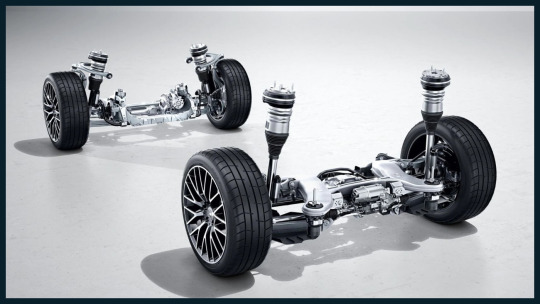
The report begins with an overview of the Automotive Air Suspension Market and presents throughout its development. It provides a comprehensive analysis of all regional and key player segments providing closer insights into current market conditions and future market opportunities, along with drivers, trend segments, consumer behavior, price factors, and market performance and estimates. Forecast market information, SWOT analysis, Automotive Air Suspension Market scenario, and feasibility study are the important aspects analyzed in this report.
The Automotive Air Suspension Market is experiencing robust growth driven by the expanding globally. The Automotive Air Suspension Market is poised for substantial growth as manufacturers across various industries embrace automation to enhance productivity, quality, and agility in their production processes. Automotive Air Suspension Market leverage robotics, machine vision, and advanced control technologies to streamline assembly tasks, reduce labor costs, and minimize errors. With increasing demand for customized products, shorter product lifecycles, and labor shortages, there is a growing need for flexible and scalable automation solutions. As technology advances and automation becomes more accessible, the adoption of automated assembly systems is expected to accelerate, driving market growth and innovation in manufacturing. Automotive Air Suspension Market Size, Share & Industry Analysis, By Component Type (Air Spring, Height Sensor), By Technology Type (Electronically Controlled Air Suspension, Non- Electronically Controlled Air Suspension), By Vehicle Type (Passenger Cars, Commercial Vehicles) and Regional Forecast, 2022-2029
Get Sample PDF Report: https://www.fortunebusinessinsights.com/enquiry/request-sample-pdf/101831
Key Strategies
Key strategies in the Automotive Air Suspension Market revolve around optimizing production efficiency, quality, and flexibility. Integration of advanced robotics and machine vision technologies streamlines assembly processes, reducing cycle times and error rates. Customization options cater to diverse product requirements and manufacturing environments, ensuring solution scalability and adaptability. Collaboration with industry partners and automation experts fosters innovation and addresses evolving customer needs and market trends. Moreover, investment in employee training and skill development facilitates seamless integration and operation of Automotive Air Suspension Market. By prioritizing these strategies, manufacturers can enhance competitiveness, accelerate time-to-market, and drive sustainable growth in the Automotive Air Suspension Market.
Major Automotive Air Suspension Market Manufacturers covered in the market report include:
Some of the major companies that are present in the automotive air suspension market include Continental AG, ThyssenKrupp AG, WABCO, Hendrickson USA, L.L.C., Dunlop Systems and Components, Hitachi, Ltd., ZF Friedrichshafen AG, and Magneti Marelli S.p.A. among the other players.
The air suspension provides a smooth, comfortable, and constant ride to the occupants. The high-cost related to the installation of the air suspension system in the vehicle is expected to restrain the growth of the market.
Trends Analysis
The Automotive Air Suspension Market is experiencing rapid expansion fueled by the manufacturing industry's pursuit of efficiency and productivity gains. Key trends include the adoption of collaborative robotics and advanced automation technologies to streamline assembly processes and reduce labor costs. With the rise of Industry 4.0 initiatives, manufacturers are investing in flexible and scalable Automotive Air Suspension Market capable of handling diverse product portfolios. Moreover, advancements in machine vision and AI-driven quality control are enhancing production throughput and ensuring product consistency. The emphasis on sustainability and lean manufacturing principles is driving innovation in energy-efficient and eco-friendly Automotive Air Suspension Market Solutions.
Regions Included in this Automotive Air Suspension Market Report are as follows:
North America [U.S., Canada, Mexico]
Europe [Germany, UK, France, Italy, Rest of Europe]
Asia-Pacific [China, India, Japan, South Korea, Southeast Asia, Australia, Rest of Asia Pacific]
South America [Brazil, Argentina, Rest of Latin America]
Middle East & Africa [GCC, North Africa, South Africa, Rest of the Middle East and Africa]
Significant Features that are under offering and key highlights of the reports:
- Detailed overview of the Automotive Air Suspension Market.
- Changing the Automotive Air Suspension Market dynamics of the industry.
- In-depth market segmentation by Type, Application, etc.
- Historical, current, and projected Automotive Air Suspension Market size in terms of volume and value.
- Recent industry trends and developments.
- Competitive landscape of the Automotive Air Suspension Market.
- Strategies of key players and product offerings.
- Potential and niche segments/regions exhibiting promising growth.
Frequently Asked Questions (FAQs):
► What is the current market scenario?
► What was the historical demand scenario, and forecast outlook from 2024 to 2030?
► What are the key market dynamics influencing growth in the Global Automotive Air Suspension Market?
► Who are the prominent players in the Global Automotive Air Suspension Market?
► What is the consumer perspective in the Global Automotive Air Suspension Market?
► What are the key demand-side and supply-side trends in the Global Automotive Air Suspension Market?
► What are the largest and the fastest-growing geographies?
► Which segment dominated and which segment is expected to grow fastest?
► What was the COVID-19 impact on the Global Automotive Air Suspension Market?
Table Of Contents:
1 Market Overview
1.1 Automotive Air Suspension Market Introduction
1.2 Market Analysis by Type
1.3 Market Analysis by Applications
1.4 Market Analysis by Regions
1.4.1 North America (United States, Canada and Mexico)
1.4.1.1 United States Market States and Outlook
1.4.1.2 Canada Market States and Outlook
1.4.1.3 Mexico Market States and Outlook
1.4.2 Europe (Germany, France, UK, Russia and Italy)
1.4.2.1 Germany Market States and Outlook
1.4.2.2 France Market States and Outlook
1.4.2.3 UK Market States and Outlook
1.4.2.4 Russia Market States and Outlook
1.4.2.5 Italy Market States and Outlook
1.4.3 Asia-Pacific (China, Japan, Korea, India and Southeast Asia)
1.4.3.1 China Market States and Outlook
1.4.3.2 Japan Market States and Outlook
1.4.3.3 Korea Market States and Outlook
1.4.3.4 India Market States and Outlook
1.4.3.5 Southeast Asia Market States and Outlook
1.4.4 South America, Middle East and Africa
1.4.4.1 Brazil Market States and Outlook
1.4.4.2 Egypt Market States and Outlook
1.4.4.3 Saudi Arabia Market States and Outlook
1.4.4.4 South Africa Market States and Outlook
1.5 Market Dynamics
1.5.1 Market Opportunities
1.5.2 Market Risk
1.5.3 Market Driving Force
2 Manufacturers Profiles
Continued…
About Us:
Fortune Business Insights™ delivers accurate data and innovative corporate analysis, helping organizations of all sizes make appropriate decisions. We tailor novel solutions for our clients, assisting them to address various challenges distinct to their businesses. Our aim is to empower them with holistic market intelligence, providing a granular overview of the market they are operating in.
Contact Us:
Fortune Business Insights™ Pvt. Ltd.
308, Supreme Headquarters,
Survey No. 36, Baner,
Pune-Bangalore Highway,
Pune - 411045, Maharashtra, India.
Phone:
US:+1 424 253 0390
UK: +44 2071 939123
APAC: +91 744 740 1245
#Automotive Air Suspension Market#Automotive Air Suspension Market Share#Automotive Air Suspension Market Size#Automotive Air Suspension Market Trends#Automotive Air Suspension Market Growth#Automotive Air Suspension Market Outlook
0 notes
Text





Website: https://www.autoclinic.store
Address: 3201 10th St N, Arlington, VA 22201
Phone: +1 703-995-9912
We Repair All Makes and Models. Call Us Today For A Free Estimate! We're Auto Clinic, your Arlington neighbors, your go-to destination for top-notch auto care, keeping our community's wheels rolling smoothly.
Business E-mail: [email protected]
Google My Business: https://g.co/kgs/GnGqWH
Facebook: https://www.facebook.com/AutoClinicArlington
Instagram: https://www.instagram.com/autoclinic22201
Opening Hours: Mon - Sat 08:00 am - 10:00 pm, Sun: Call for Availability
#Auto Repairs#Automotive Repairs#Automotive Repair Shop#Automotive Service#Auto Detailing Service#Vehicle repair shop#Air and cabin filter replacement#Vehicle engine diagnostic#Battery#Brakes#Oil change#Steering and suspension repair#Transmission#A/C installation and repair#Vehicle battery maintenance#Vehicle battery replacement#Vehicle brake repair#Vehicle brake replacement#Auto detailing#Vehicle engine tuning#Vehicle exhaust system repair#Auto glass repair#Vehicle glass replacement#Vehicle interior vacuuming#Vehicle maintenance#Vehicle rear window replacement#Vehicle side window replacement#Vehicle tyre replacement#Vehicle windshield repair#Vehicle windshield replacement
1 note
·
View note
Text
#northern automotive#darwin 4x4 recovery service#concept seats australia#custom van fitouts#fadiel hand controls#mobile seat belt repairs#van seat installation near me#hand controls for cars australia#vehicle access solutions#car modifications adelaide#air suspension seats for 4wd#tailgate loaders#territory technology solutions#kat vehicle shelving#corsair vehicle solutions
0 notes
Photo

📰 TAEVision Engineering 's Posts - Tue, Jun 13, 2023 TAEVision 3D Mechanical Design • Tools Repair RemovalGlowPlugs M10x1 Renault 1.5dCi K9K / 1.9dCi F9Q • Parts AutoParts Aftermarket AirSuspension MercedesBenz CClass • Automotive MercedesBenz EClass E400 Coupe • Machinery Agriculture Forest NewHolland Tractor 🚜 5500 01 - Data 244 Tools GarageTools Repair RepairTools RemovalTools RemovalGlowPlugs glowplugs M10x1 Renault 1.5dCi K9K / 1.9dCi F9Q 60423000 - PICHLER... ▸ TAEVision Engineering's Post on Tumblr 02 - Data 472 Design Applications Parts AutoParts Aftermarket adaptive air suspension AirSuspension AdaptiveAirSuspension MercedesBenz CClass ▸ TAEVision Engineering's Post on Tumblr 03 - Data 422 3D Design Applications Automotive Mercedes-Benz Reflections - ShowRoom MercedesBenz EClass E400 Coupe 2016 (1) ▸ TAEVision Engineering's Post on Tumblr 04 - Data 476 3D Design Applications Machinery Agriculture Farm Farms Farming Forest NewHolland Harvest Field Scene (01) Tractor 🚜 New Holland 5500 TurboSuper Engine Type 8000 55 HP ▸ TAEVision Engineering's Post on Tumblr
📰 I just updated my Pressfolio: TAEVision Mechanics's Online Portfolio - Global Data - Jun 13, 2023 ▸ TAEVision Mechanics's Online Portfolio (last update)
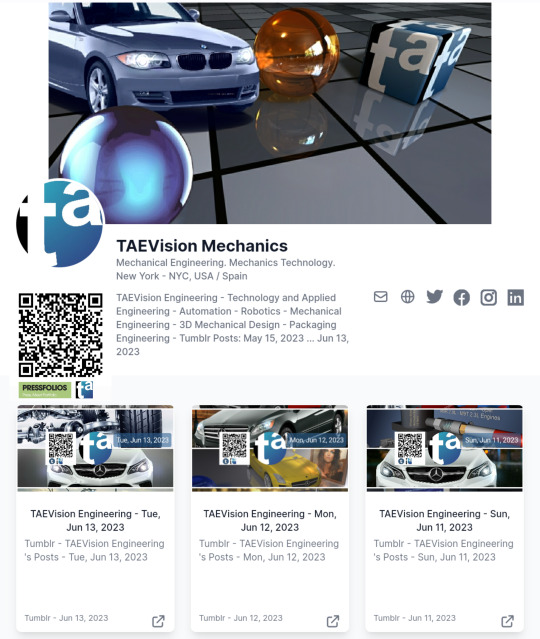
Global Data - Jun 13, 2023
#TAEVision#engineering#3d#mechanicaldesign#tools#repair tools#removal glowplugs#glowplugs M10x1 Renault 1.5dCi K9K / 1.9dCi F9Q#RENAULT Tools#1.5dCi K9K#1.9dCi F9Q#parts#autoparts#aftermarket#adaptive air suspension#AdaptiveAirSuspension#air suspension#AirSuspension#MercedesBenz CClass#automotive#MercedesBenz#EClass#E400 coupe#machinery#agriculture#forest#NewHolland#harvest field scene#New Holland 5500 TurboSuper engine type 8000
1 note
·
View note
Text
APAC Is Dominating Automotive Air Suspension Market
In 2021, the automotive air suspension market was worth around USD 6,262.00 million, and it is projected to advance at a 6.25% CAGR from 2021 to 2030, hitting USD 10,805.66 million in 2030, as per P&S Intelligence. This growth can be ascribed to the growing need for commercial vehicles coupled with vehicle security and convince which ultimately boosts the requirement for the air suspension…
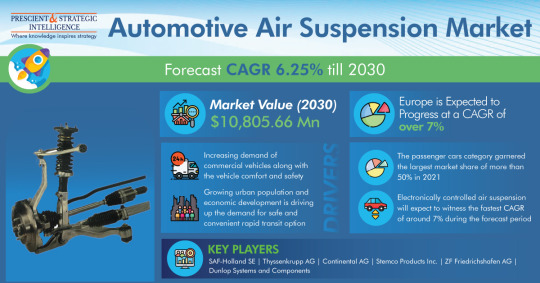
View On WordPress
#Automotive Air Suspension Market#Automotive Air Suspension Market Growth#Automotive Air Suspension Market Outlook#Automotive Air Suspension Market Research Report#Automotive Air Suspension Market Share#Automotive Air Suspension Market Size#Automotive Air Suspension Market Trends
1 note
·
View note
Text
What are air cylinders used for? In manufacturing industries, pneumatic cylinders will often be used for opening valves, doors,taking things on or off conveyor belts and lifting heavy objects. In the automotive industry, pneumatic cylinders have a different role. They're used in cars and trucks to be used for suspension and brakes. What is meant by an air cylinder? a cylinder in which air is compressed by a piston, in which compressed air is stored, or in which a piston is driven by air pressure. How many types of air cylinder is used? There are three main types of pneumatic cylinders, including: Single Acting Cylinders. Double Acting Cylinders. Telescoping Cylinders. What is the working principle of cylinder? Image result for air-cylinders The operation of hydraulic cylinder is based on Pascal's principle. According to Pascal's principle, the pressure is equal to the force divided by the area on which it acts. A pressure used on a piston produces an equal increase in pressure on the second piston in the system.
#avoidplastics#FollowTrafficRules#ourbestqualityproduct#ontimematerialdispatch#bestproducts#goodwillenginnering#DrugFreeSociety#What are air cylinders used for?#In manufacturing industries#pneumatic cylinders will often be used for opening valves#doors#taking things on or off conveyor belts and lifting heavy objects. In the automotive industry#pneumatic cylinders have a different role. They're used in cars and trucks to be used for suspension and brakes.#What is meant by an air cylinder?#in which compressed air is stored
0 notes
Text
Automotive Air Suspension Market Outlook to 2027
From USD 4,918.49 million in 2021 to USD 6,931.39 million in 2027, the global automotive air suspension market is expected to grow at a CAGR of 5.9% between 2017 and 2027.
0 notes
Text
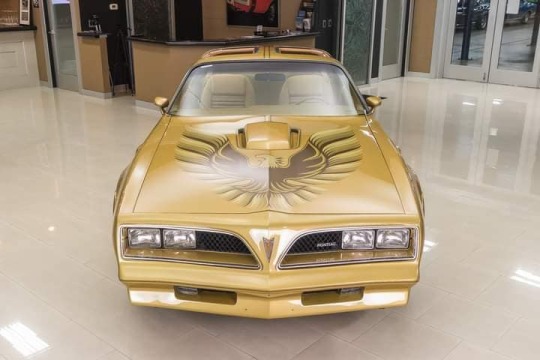
1978 Pontiac Firebird Trans Am
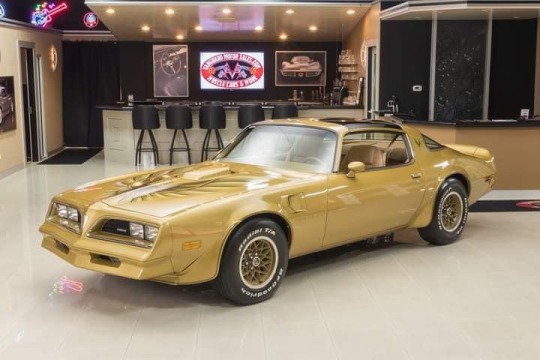
1978 Pontiac Firebird Trans Am
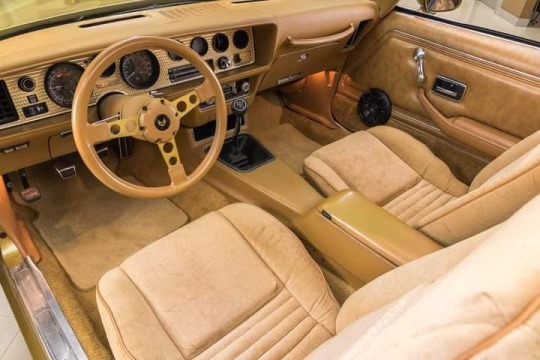
1978 Pontiac Firebird Trans Am
Things You Might Not Know About the 1978 Pontiac Firebird Trans Am
The **1978 Pontiac Firebird Trans Am** holds a special place in automotive history, renowned for its bold styling, powerful performance, and cultural significance. Here are some fascinating facts you might not know about this iconic muscle car:
1. **"Smokey and the Bandit" Fame:
The 1978 Pontiac Firebird Trans Am gained widespread popularity thanks to its starring role in the classic movie *Smokey and the Bandit*. Burt Reynolds’ character drove a black-and-gold Trans Am, turning it into an instant pop culture icon.
2. **W72 Performance Package:
The W72 performance package, offered in the 1978 model, significantly enhanced the engine's performance. With a 400 cubic-inch V8 engine, it delivered around 220 horsepower, which was a respectable number for the late 1970s when emissions regulations were restricting power outputs.
3. **Special Edition Models:
Pontiac released several special editions of the 1978 Trans Am, including the Gold Special Edition and the famous Black Special Edition, often referred to as the "Bandit Edition." These models featured gold accents, such as the iconic "screaming chicken" decal on the hood and gold alloy wheels.
4. **Improved Handling:
While muscle cars are known for their straight-line speed, the 1978 Firebird Trans Am was notable for its handling. Pontiac engineers upgraded the suspension and steering, making the Trans Am one of the best-handling American cars of its time.
5. **Optional T-Tops:
Buyers of the 1978 Trans Am could opt for T-top removable roof panels, which became a favorite among enthusiasts. These panels gave the car an open-air feel without compromising the structural integrity of the body.
6. **Last Year for the 400 V8:
The 1978 model year marked the last time Pontiac offered the 400 cubic-inch V8 engine in the Trans Am. This engine was one of the final remnants of the muscle car era, and its discontinuation was a sign of the changing times in the automotive world.
7. **Appearance Package Overhaul:
In 1978, Pontiac updated the Firebird's appearance, giving it a new front end with a split grille and updated rear-end styling. This refresh helped keep the Trans Am competitive in the rapidly changing car market of the late '70s.
8. **Turbo Hood Scoop:
The Trans Am featured a functional "shaker" hood scoop, which helped channel cool air into the engine, boosting performance. The hood scoop was not just for show—it played a real role in enhancing the car's capabilities.
9. **High Sales Numbers:
Despite rising fuel costs and growing emissions regulations, the 1978 Pontiac Firebird Trans Am was a commercial success. Pontiac sold over 93,000 units of the Trans Am that year, proving that demand for muscle cars still existed, even in a more restrictive era.
10. **Enduring Legacy:
The 1978 Trans Am continues to be a favorite among collectors and car enthusiasts. Its unique combination of performance, style, and cultural impact ensures that it remains one of the most beloved muscle cars from the golden age of American automotive design.
These little-known facts highlight the lasting appeal of the **1978 Pontiac Firebird Trans Am**, a car that has transcended its era to become a symbol of American automotive culture.
#Pontiac Firebird Trans Am#pontiac firebird#pontiac#pontiac trans am#firebird#trans am#car#cars#muscle car#american muscle
207 notes
·
View notes
Photo
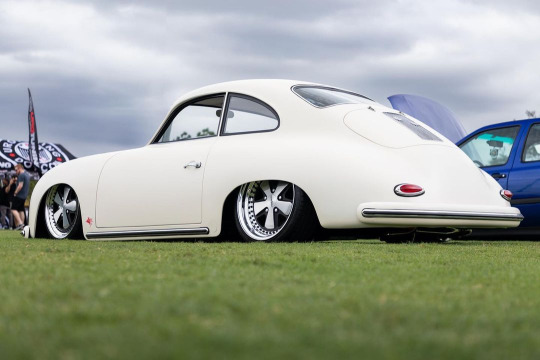
Porsche 356
#porsche#porsche 356#classic cars#tumblrcars#vintage#vintage cars#vintage porsche#air suspension#car#cars#stance#autos#automobiles#automotive
525 notes
·
View notes
Text
New Need For Speed Graphics Look Crazy 😳
2021 Toyota Supra A90 on Work Meister S1 3P Wheels & Universal Air Suspension
What Does Need for Speed look like in real life? Strict Standards Streetwear returns to answer the curiosity of car enthusiasts worldwide. As a project car owner, Brivas acquired a passion for all things automotive through classic video games he played throughout his childhood. Executing action towards his dreams, he phased out all goals, coming through to inspire others who have loved street-racing video games in their early years- but steered away from their automotive calling. Enjoy a one-minute montage as Brivas brings the collaborative support, shutting down the California Night with his widebody 2021 Toyota Supra A90 on Work Meister S1 3P Wheels.
🔑 @brivas710
#STRICTSTANDARDS 🇺🇸
#need for speed#need for speed most wanted#toyota#supra#supra mk5#mk5 supra#mkiv supra#toyota supra#jdm#japanese muscle#muscle cars#tuner cars#import#modern muscle#jdm muscle#new cars#luxury cars#widebody cars#kustom kulture#kustom#custom#custom car#strict standards#car#cars#racecar#fast car#street race#pro street
12 notes
·
View notes
Text



Launched a century ago, the Bugatti Type 35 didn’t just make a single impact—it revolutionized the racing world with its innovative design and engineering. The car became legendary not only for its initial capabilities when it debuted in 1924 but also for the continuous improvements Bugatti implemented throughout its production. Ettore Bugatti was one of the first automobile manufacturers to grasp the marketing potential of winning races on Europe’s renowned circuits and road tracks, which brought considerable publicity to his brand. Confident as he was in the capabilities of his new car, even Bugatti could not have predicted that the Type 35 would become the most successful race car in history, achieving 2,500 victories during its active racing career.
The first Type 35, released in 1924, was equipped with a 1,991cc eight-cylinder engine, delivering 90 PS in race trim. By early 1926, Bugatti had increased the engine size to 2,262cc for the Type 35T, named after the famous Targa Florio road race in Italy, which it won, with two smaller-engined Type 35s finishing close behind. Despite this success, Ettore Bugatti realized that to stay ahead of the competition, he needed more than just increased engine displacement. He knew that the future of performance lay in forced induction, even though he was initially not a fan of superchargers, which were seen as inefficient at the time.
“It’s no secret Ettore Bugatti preferred naturally aspirated engines and was not an early enthusiast of supercharging due to its perceived inefficiency,” says Luigi Galli, Specialist for Heritage and Certification at Bugatti. “However, what’s less well known is that Bugatti was forward-thinking about the potential of forced induction, experimenting with superchargers even before the Type 35 debuted at its first race in Lyon in August 1924. In fact, Bugatti applied for French patent number 576.182 on January 22, 1924, for a ‘Compresseur ou pompe à palettes,’ a rotary vane supercharger design that could provide extra power on demand by forcing pressurized air into the carburetor. If Bugatti was going to use a supercharger, he was determined to innovate in his own way.”
As a result, Ettore Bugatti, alongside the Italian engineer Edmond Moglia, developed a unique three-rotor Roots-type supercharger, differing from the common two-rotor designs of the time. This supercharger was strategically mounted on the engine’s offside, which allowed it to warm up more quickly and improve overall engine cooling—a principle that remains relevant in modern engine design. The Type 35TC, where “TC” stands for Targa Compressor, was introduced in late 1926. It evolved into the Type 35B in 1927, featuring a larger radiator and cowling, known as the ‘Miramas’ design, which enhanced cooling capabilities. This configuration enabled the Type 35B to produce up to 130 PS, achieving speeds over 205 km/h (150 mph).
By late 1930, further refinements led to what many consider the ultimate version of the Type 35B. This final iteration featured a twin-cam, two-valve-per-cylinder engine, a twin fuel filler cap, improved suspension, wheels, brakes, and tires, as well as a lower-mounted supercharger relief valve. Bugatti’s relentless pursuit of perfection extended to optimizing every element of the combustion system, from sculpted pistons and cylinder heads to the use of aviation-grade fuel, which boosted the output to 140 PS.
Today, at Bugatti’s atelier in Molsheim, each Bugatti model is hand-assembled with the same meticulous attention to detail that Ettore Bugatti applied to the Type 35. A century later, Bugatti’s engineers and designers continue to push the boundaries of automotive excellence, upholding a legacy of innovation and performance that began with the groundbreaking Type 35.
8 notes
·
View notes
Photo
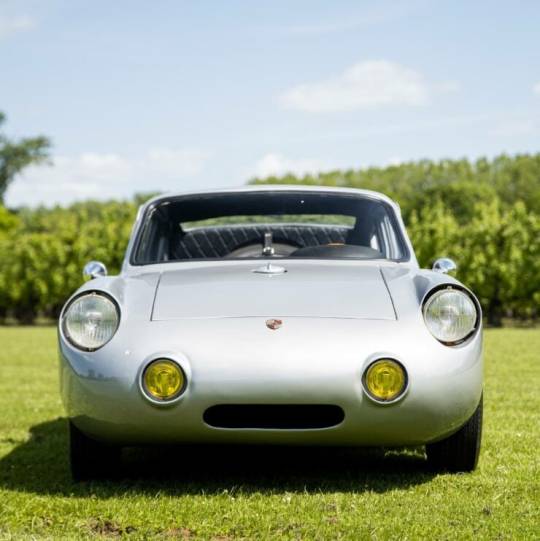


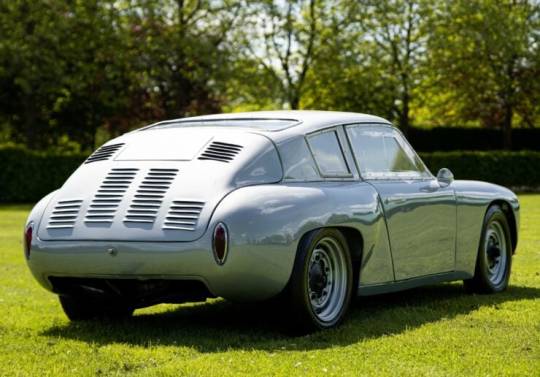
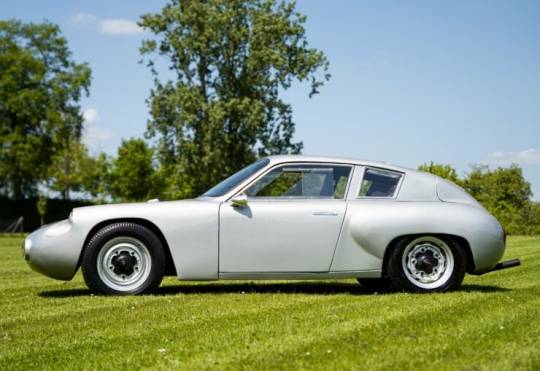
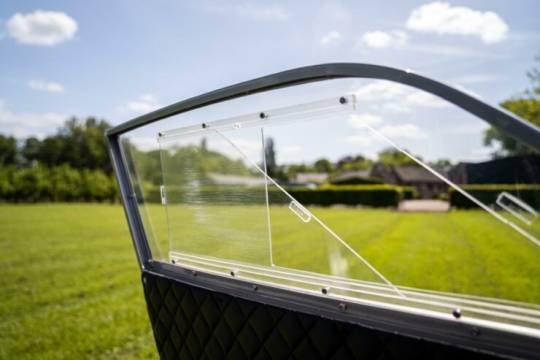
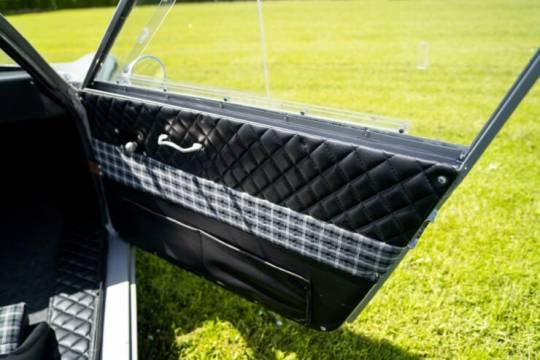
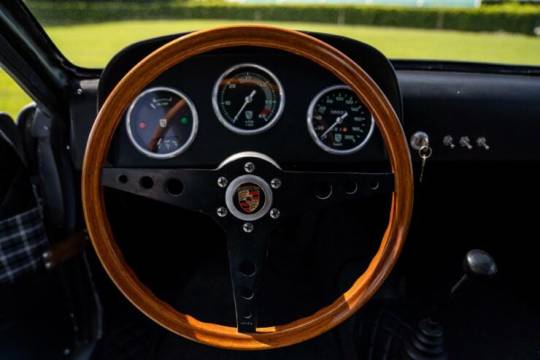


Porsche 356 Borghi Abarth (1 of 1.
This is the Porsche 356 Borghi Abarth, it’s a car with a fascinating backstory being the only one of its kind ever made – and it was only built because the 1953 Porsche 356 it’s based on burned to the ground in an accident. The car was built not in Italy but in Buenos Aires, Argentina. Italian coachbuilder Aldo Borghi had relocated to the South American country at a time when Argentina was booming economically and set up a coachbuilding and automotive race preparation shop.
Aldo Borghi was born in Italy, he trained as a young man in the art of automotive coachbuilding, specializing in the use of aluminum alloy to create strong, lightweight bodies. He later moved to Buenos Aires, Argentina, or more specifically he moved to the town of Tigre which is just slightly north of Buenos Aires but which is often included as being part of the large South American city.
In Argentina Borghi set up his own garage specializing in coachbuilding and developing sports cars for the bustling local racing scene. A number of significant cars came out of his workshop including the Alfa Romeo 2900 “Ballena” and the Alfa Romeo Spyder 6C 2500 “Paquito”, and he restored the Alfa Romeo 3000CM Carroceria Boano after an accident.
In 1965 he was brought the burned out hulk of a 1953 Porsche 356. Exactly what had happened to the car is lost to history but Borghi was able to salvage the floorpan, engine, transmission, and a number of other parts.
He then built a new body for the car entirely from hand-shaped aluminum, influenced by the styling of the Rocco Motto Abarth racing cars. The owner was delighted with the transformation and the car was notably lighter thanks to the loss of its original steel body.
Building a new body for a car that’s been badly burned isn’t an easy task, fortunately Aldo Borghi was more than up to the task.
He created an entirely new outer bodyshell in aluminum alloy by hand shaping each of the panels needed, using the styling of the aforementioned Rocco Motto Abarth racing cars as his guide. The end result would be a car with fastback styling, a sleek front end, wider rear wheel arches, and an engine bay that was considerably more roomy than the Porsche original.
The lack rearward visibility is perhaps the only major gripe, but there’s not a lot of need to see what’s behind you when you’re winning anyway.
Thanks to the loss of its heavier original steel body, the new car – named the Porsche 356 Borghi Abarth – was considerably faster than its forebear. The Porsche Super 90 engine was later upgraded to produce approximately 110 bhp, with power sent to the rear wheels via the original Porsche 4-speed manual transmission.
The car rides on steel wheels, with Porsche drum brakes at each of the four corners, and of course it has the independent front and rear suspension of the original 356.
Inside the car you’ll find a tastefully executed interior with leather seats that have plaid cloth inserts. This same combination is used on the doors, and the roof lining and rear of the car are finished in quilted leather.
Up front there’s a wood-rimmed classic steering wheel beside the gear lever, with three gauges front and center in the dashboard showing your speed, revs, and fuel level with the tachometer naturally in the center for optimal visibility.
#Porsche 356 Borghi Abarth#Aldo Borghi#Alfa Romeo 2900#Alfa Romeo Spyder 6C 2500#Alfa Romeo 3000CM#Porsche 356
133 notes
·
View notes
Text
#corsair vehicle solutions#territory technology solutions#kat vehicle shelving#tailgate loaders#air suspension seats for 4wd#car modifications adelaide#vehicle access solutions#hand controls for cars australia#van seat installation near me#mobile seat belt repairs#fadiel hand controls#custom van fitouts#concept seats australia#darwin 4x4 recovery service#northern automotive#Custom car modifications#"#techsafe seat#aus fleet solutions australia
0 notes
Text

Don Yenko took a daring step by converting the Chevrolet Corvair into a focused race car. The Stage III package brought significant engine modifications and weight savings, creating a dedicated SCCA competitor that left plenty of skeptics in its rearview mirror.
Power Where It Counts
At the heart of the Stage III is a souped-up flat-six engine, reworked with high-compression cylinder heads, upgraded carburetors, and a performance exhaust system. These tweaks pushed horsepower well beyond stock specs, giving this road racer a potent blend of torque and rev-happy excitement.
Handling and Balance
With the engine mounted in the rear, the Corvair always had a different feel from front-engine cars. Don Yenko further refined the suspension and chassis, sharpening the car’s cornering precision. This combination became a secret weapon on tight SCCA circuits, surprising drivers who expected the usual muscle-car approach.
Bold Identity
A Stage III Stinger stands out with signature stripes and Yenko badging that adds to its race-ready look. The unique vents and scoops lend a purposeful air, hinting at the performance upgrades beneath the sheet metal.
Collector’s Prize
Low production numbers mean spotting a real Stage III can feel like finding a hidden piece of automotive history. Many have been carefully preserved by enthusiasts who know how rare these machines are. Owning one provides a direct link to Don Yenko’s daring ingenuity and the era’s thrilling spirit of competition.
4 notes
·
View notes